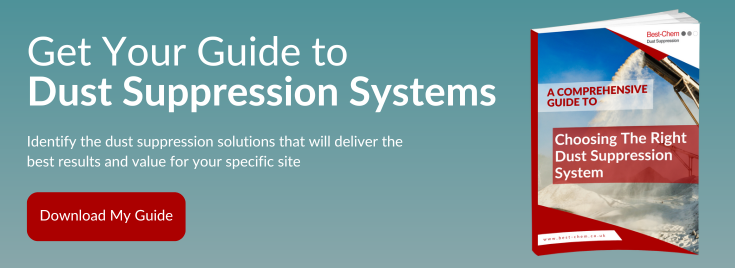
Finding The Right Solution For Your Mining Dust Control Operations
Dust is a major practical and legislative challenge in any mining operation. Understanding dust and the wide range of solutions can not only make your site safer, it can also bring a host of benefits such as extending the life of your equipment. Today, we offer a quick guide to finding the right solution for your mining dust control.

Do You Have Enough Water?
The application of water is one of the most effective methods of dust suppression system in mines. Dust particles absorb water, which makes them heavy. Consequently, they sink to the ground and are much less likely to be inhaled. This is true of all dust particulates, including silicates. It may sound counterintuitive that the substance that we use to make glass can absorb water, but science is full of strange miracles. In this case, capillary condensation and surface area do the job perfectly. However, this method only works if you have access to large and constant supplies of water. Locations with high concentrations of limestone are usually acceptable for mining dust control using water, as the karstification process creates rich underground reservoirs.
Does ‘One-Size-Fits-All’?
Unfortunately, while water is almost always the answer, it is the application method that matters. For instance, haul roads create vast quantities of dust and therefore need high quantities of dust suppression. Sprinkler systems are often the ideal solution, as they spray heavy water droplets that can safely and efficiently absorb large dust particles. Transfer points tend to have a constant dust haze, and therefore benefit from misting systems. These keep enough moisture in the air to clear the dust. Additional considerations include aspects such as the weather. For instance, misting systems are not always strong enough to control dust in very windy areas. In some cases, foam sprays are the answer, as these require 70% less water. As such, tailoring the solution to the site is vital.
Know Your Dust!
Different environments will create different types of dust. As such, knowing what you’re working with is important. One of the most important variables is the silica content, as this is where the primary health hazard is located. Silicosis needs to be taken very seriously, and in the UK, it is regulated. The Control of Substances Hazardous to Health Regulations 2002 (COSHH) and the Respirable Crystalline Silica Workplace Exposure Limit (WEL) both apply. Penalties for failing to comply with COSHH begin with unlimited fines and can result in imprisonment, so if you have any kind of hazardous dust on your land, it is crucial to find the right solution for it.
Sustainable Investments
Dust control is a primary investment in any mining, drilling, or construction operation. It protects both employees and the public, ensures legal compliance, and can even extend the life of your equipment. For instance, mobile plant engines can be easily damaged by ingesting dust, and this can be avoided if dust is kept to a minimum. As such, it pays to look for a solution that is going to offer long-term effectiveness. In general, this offers much more efficient return on investment as well as the added cost-saving bonus of protecting your equipment.
Find Out More
Dust control needs to be tailored to your unique needs. At Best Chem, we are here to support you in finding the ideal solution for dust suppression in mines. To learn more, contact one of our team members.
Image Source: Canva
